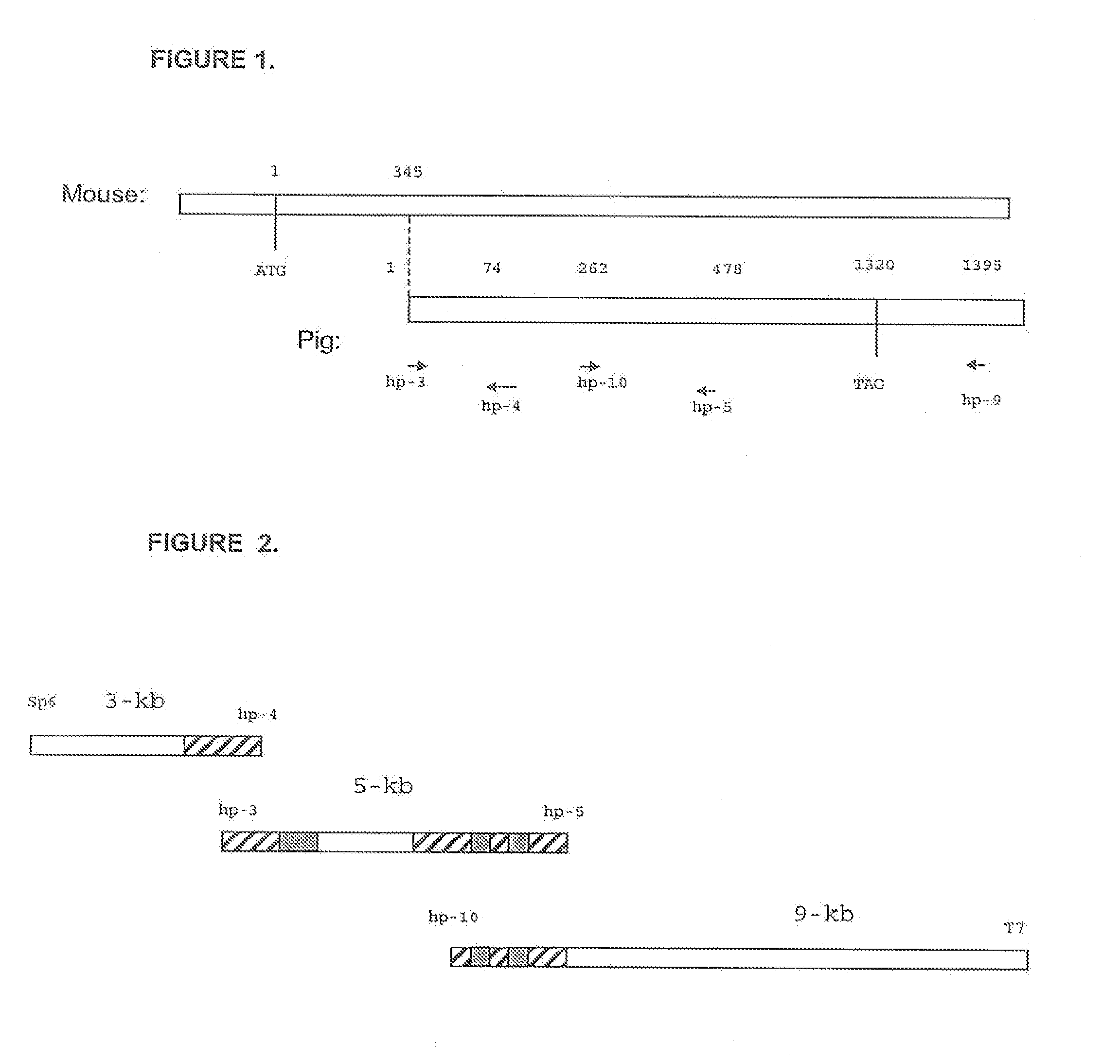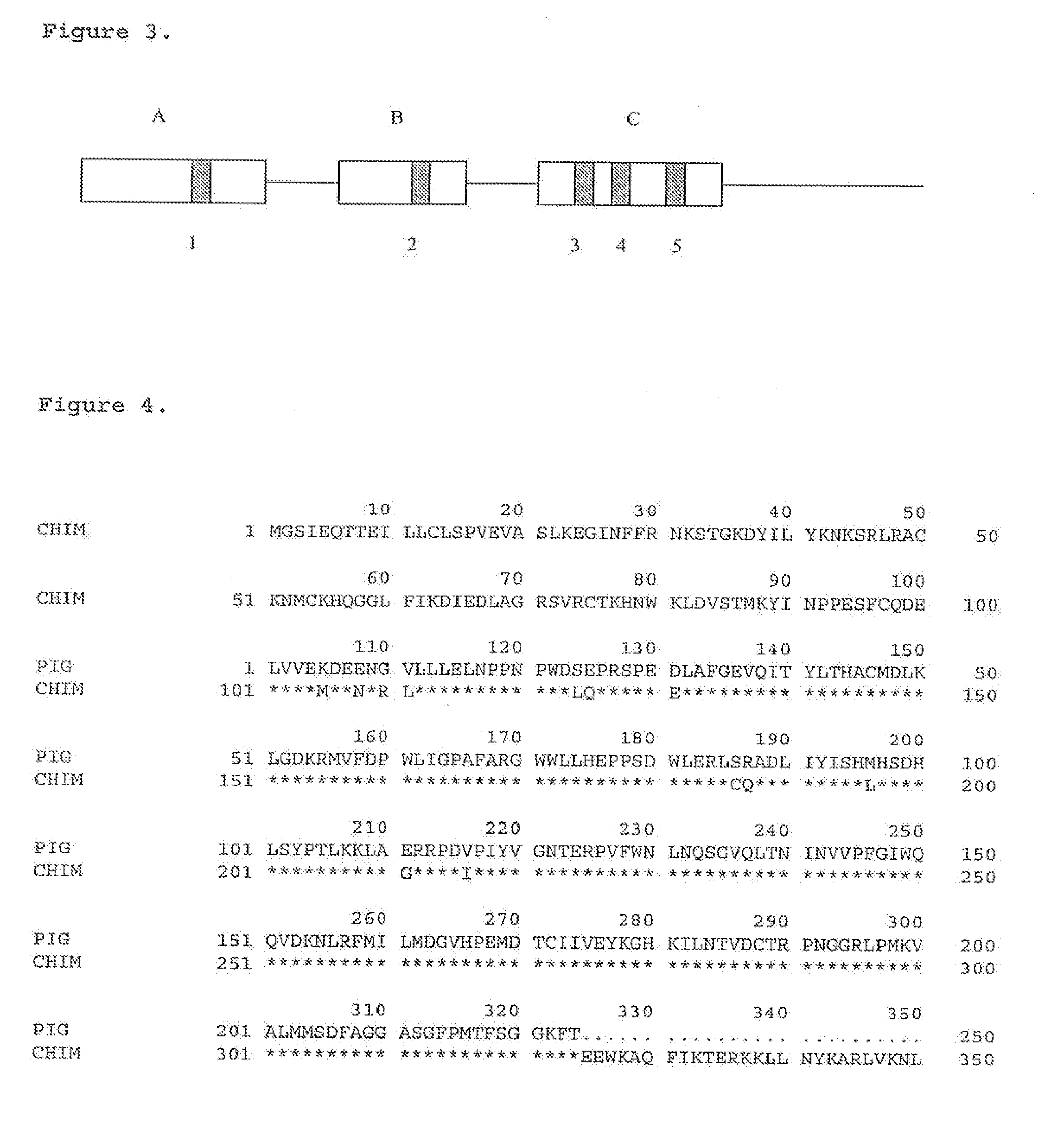Modified Organs and Cells for Xenotransplantation
a technology of organs and cells, applied in the field of xenotransplantation, can solve the problems of insufficient cadaveric organs to meet clinical demand, insufficient number, and inability to routinely use these species as organ donors, and achieve the effect of maintaining their structural integrity and viability
- Summary
- Abstract
- Description
- Claims
- Application Information
AI Technical Summary
Benefits of technology
Problems solved by technology
Method used
Image
Examples
example 1
Preparation of Pig RBCs for Xenotransplantation
[0081] Physiology of Pig Red Blood Cells
[0082] As in other mammals, the primary site for erythropoiesis in pigs is bone marrow. Serologically, pRBCs share a number of common characteristics with human RBCs (Table 1) (Pond W G, Houpt K A. The Biology of the Pig. Ithaca: Comstock Pub. Associates, 1978; Jandl J H. Blood: Textbook of Hematology. Boston: Little, Brown, 1996). The pRBC is a bioconcave disk of approximately 4-8 microns in diameter. The hematocrit of pig blood is 35-47%, with a hemoglobin concentration of 6-17 g / 100 ml. The half-life of pRBC is approximately 40 days, in comparison to 60 days for human RBCs.
TABLE 1Comparison of selected parameters relating to blood between pigand human.PigHumanBlood volume56-95 ml / kg, 10%25-45 ml / kgRBC counts5.7-6.9 million / ul4.2-5.2 million / ulSize (diameter)4-8 um7.7 umLife span86 + 11.5 days120 daysBlood groups1523Hematocrit35-47%38%Isotonic0.85% NaCl0.9% NaClHemoglobin5.9-17.4 g / 100 ml12-...
example 2
Masking Neuraminidase-treated pRBCs With NeuAc
[0102] Since the treatment of pRBCs with neuraminidase removes not only NeuGc but also NeuAc from the cell surface, the asialyl-RBCs are likely to be unstable in vivo primarily due to the loss of negatively-charged residues from the cell surface and exposure of underlying carbohydrate structures. This obstacle can be overcome by treating with sialyltransferase, using CMP-NeuAc as substrate. There are several well-established procedures for the sialyltransferase reaction described in the literature (Kojima N, et al., Biochemistry. 17;33:5772-6, 1994).
example 3
Determination of Relative Importance of Gal and NonGal Epitopes on pRBCs
[0103] The relative importance of Gal and nonGal in the destruction of pRBCs by the human immune response has been determined. Following a blood transfusion, mismatched human RBCs, e.g. ABO-incompatible cells, undergo intravascular destruction by the same mechanism as the complement-induced hemolysis observed in vitro. To shed light on how the binding of human xenoreactive antibodies to pRBCs triggers the complement cascade and leads to hemolysis, an in vitro complement assay was established. Different amounts of human serum (containing preformed natural antibodies as well as complement) were mixed with 40 μl of 5% pRBCs (approximately 2×107 cells) in a total volume of 210 μl. After incubating at 37° C. for 1 hour with constant rotation, the remaining intact pRBCs were removed from the reaction by centrifugation. The amount of hemoglobin released from lysed cells was measured by the absorbency at 541 nm. The am...
PUM
| Property | Measurement | Unit |
|---|---|---|
| volume | aaaaa | aaaaa |
| diameter | aaaaa | aaaaa |
| concentration | aaaaa | aaaaa |
Abstract
Description
Claims
Application Information
 Login to View More
Login to View More - R&D
- Intellectual Property
- Life Sciences
- Materials
- Tech Scout
- Unparalleled Data Quality
- Higher Quality Content
- 60% Fewer Hallucinations
Browse by: Latest US Patents, China's latest patents, Technical Efficacy Thesaurus, Application Domain, Technology Topic, Popular Technical Reports.
© 2025 PatSnap. All rights reserved.Legal|Privacy policy|Modern Slavery Act Transparency Statement|Sitemap|About US| Contact US: help@patsnap.com


